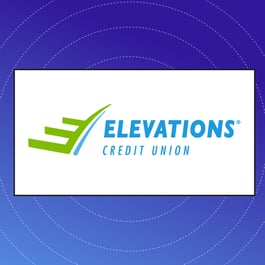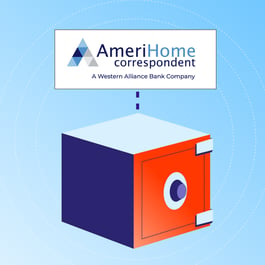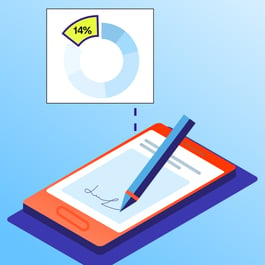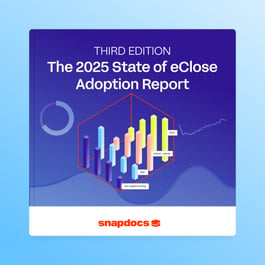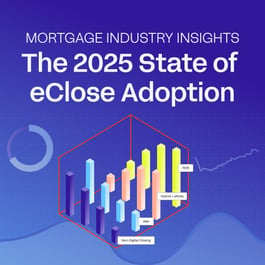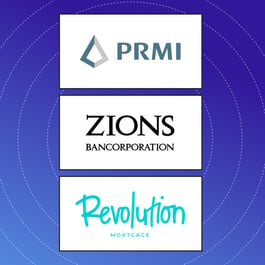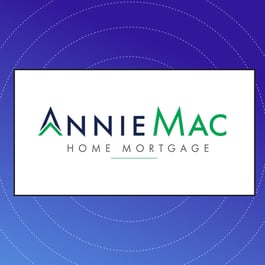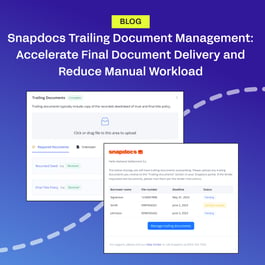It’s a myth that adopting digital closings is an all-or-nothing endeavor, where you have to go directly from paper closings to full eClosings. The reality is that the middle ground — called hybrid closings — offers immediate time and cost savings, while also setting lenders up with a successful foundation to reach eClosings.
Although some lenders want to get to the goal line faster and bypass hybrid closings, the jump from paper to eClosings requires a lot of work that results in little or no ROI. This is due to limited stakeholder acceptance of all the different components that make up an eClosing. However, lenders who start with hybrid mortgage closings are able to digitize 99% of their closings in as little as one month and see ROI quickly. They also build a foundation that digital closing components, like electronic promissory notes (eNotes) and remote online notarization (RON), can be easily added to.
Hybrid closings offer the most successful path to digital closing adoption, so it’s important for you to know what a hybrid closing is and how it works.
What is a hybrid closing?
A hybrid closing is a type of digital closing where some of the loan package is signed or notarized in ink and the rest is electronically completed. The lender or investor’s preferences dictate which documents are wet signed versus eSigned.
Borrowers receive the digitized closing package as soon as it’s ready. This allows them to review it, ask questions, and eSign some of the documents before the closing appointment. At the in-person closing, borrowers wet sign the papers that need to be executed in ink. The promissory note can either be signed on paper or digitized and eSigned as an eNote.
Although hybrid closings include digital components, an in-person closing appointment is usually still necessary. This is because hybrid closings will always involve some wet-signed documents. Even though an in-person closing is needed, the appointment is reduced from an hour to just 15 minutes. This is because borrowers can eSign 75% of a typical loan package prior to the closing.
What are common types of hybrid closings?
As you can see, there are no set rules as to which documents need to be wet signed versus eSigned. Lenders will determine their own preferences, and they’ll need to work with their investors to understand what they accept. However, there are a few variations of hybrid closings that are common across the industry.
The two most common types of hybrid closings are:
- A hybrid closing that includes eSigning non-notarized documents, a paper note, ink notarization, and an in-person closing appointment.
- A hybrid closing that includes eSigning non-notarized documents, an eNote, ink notarization, and an in-person closing appointment.
Due to the COVID-19 pandemic, a third type of hybrid closing has recently emerged:
- A hybrid closing that includes eSigning non-notarized documents, a paper note, electronic notarization, and a remote closing appointment.
How does a hybrid closing work?
Although there are variations in hybrid closings, the workflow is similar leading up to the closing table. Here’s how it works.
1. Information and documents are transferred to the digital closing solution
Loan information and closing documents are transferred from the lender’s LOS and/or document preparation provider into the digital closing software.
2. Documents are sorted into wet-sign and eSign packages
The loan documents are separated into wet-sign and eSign packages, based on the lender or investor’s preferences.
3. eSign-eligible documents are annotated
Documents that will be eSigned are annotated with fields for eSignatures, dates, initials, and anything else that needs to be filled in.
4. All parties have visibility into the closing and borrowers can electronically review and eSign documents
Once the documents are ready, the lender loops in the settlement company and the borrower so they have visibility into the progress of the closing. The settlement company coordinates the closing appointment. The borrower is able to review the closing package, ask questions, and eSign some documents before the closing. If an eNote is included, borrowers will also be able to eSign it.
The closing appointment is where the process diverges.
In-person closing
Hybrid closings that involve ink notarization need to be completed in-person. Any documents that the borrower wasn’t able to eSign prior to the closing appointment can be eSigned at the closing table. The remaining documents that aren’t eligible to be eSigned are executed in ink. If the promissory note wasn’t eligible to be eSigned, then it will be wet signed at this time.
Remote closing
When a hybrid closing involves a paper note and remote online notarization, the closing will take place virtually. Using two-way audiovisual technology, the borrower will virtually meet with the settlement agent or notary signing agent. Both parties will walk through the rest of the documents, eSign, and eNotarize them in real time.
The paper note is signed outside of the closing appointment. The lender will need to print and mail the promissory note to the borrower. The borrower will wet sign it and then mail the note back to the lender. This is the only part of the closing that isn’t completed digitally, which creates a disjointed experience for the borrower. That’s why this type of hybrid closing should only be used in these scenarios:
- When a remote closing is needed and the lender doesn’t have eNote capabilities yet
- When a remote closing is needed and the lender’s investors or warehouse partners don’t accept eNotes
After the closing appointment
Lenders have immediate access to any eSigned or eNotarized documents once they’re completed. If an eNote was used in the hybrid closing, it’s securely stored in an eVault and registered on the MERSⓇ eRegistry.
Lastly, the settlement company records the necessary documents with the county. Since the two most common types of hybrid closings use ink notarization, the recording process remains the same. If the hybrid closing uses RON though, then the files will be electronically transferred and eRecorded. Not all U.S. counties currently support eRecording. Those that don’t may allow “papering out.” This process turns an electronic file into a paper document that can be recorded.
There are many different ways to execute a hybrid closing. In its simplest form, a hybrid closing only includes eSigning of non-notarized documents. Because of this, hybrid closings are widely accepted and supported in the industry. Lenders can rapidly scale hybrids, which results in tangible results, like more loans closed per employee and same-day funding. Once they’re closing the majority of their loans as hybrids, lenders can then add eNotes and RON without much heavy lifting.
See how valuable hybrid closings can be to your business by watching our “Evergreen Home Loans shares how they will achieve 5,000+ hybrid closings in 2019” on-demand webinar. You’ll hear from Tamra Rieger, COO at Evergreen Home Loans, on why they started with hybrid closings first, how they chose their eClosing platform, and how they were able to do hybrid closings at scale.












